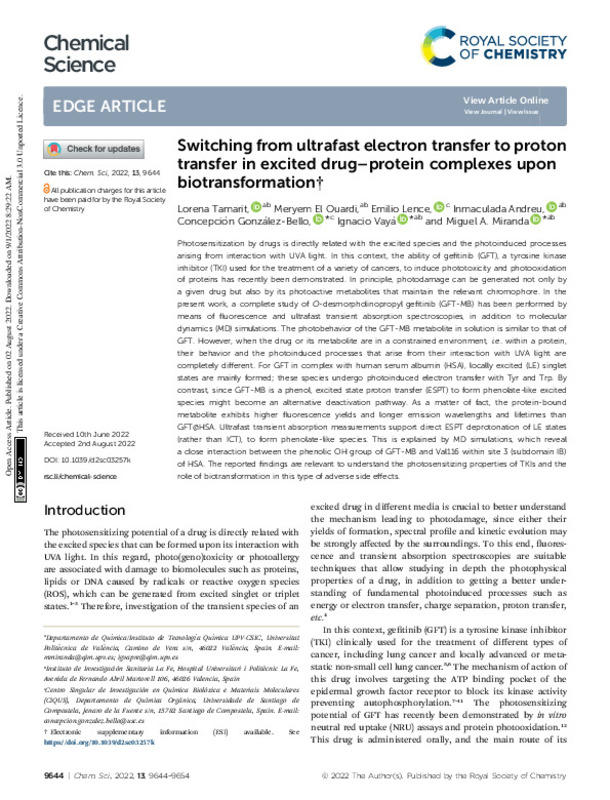JavaScript is disabled for your browser. Some features of this site may not work without it.
Buscar en RiuNet
Listar
Mi cuenta
Estadísticas
Ayuda RiuNet
Admin. UPV
Switching from ultrafast electron transfer to proton transfer in excited drug-protein complexes upon biotransformation
Mostrar el registro completo del ítem
Tamarit-Mayo, L.; El Ouardi, M.; Lence, E.; Andreu, I.; González-Bello, C.; Vayá Pérez, I.; Miranda Alonso, MÁ. (2022). Switching from ultrafast electron transfer to proton transfer in excited drug-protein complexes upon biotransformation. Chemical Science. 13(33):9644-9654. https://doi.org/10.1039/d2sc03257k
Por favor, use este identificador para citar o enlazar este ítem: http://hdl.handle.net/10251/194993
Ficheros en el ítem
Metadatos del ítem
| Título: | Switching from ultrafast electron transfer to proton transfer in excited drug-protein complexes upon biotransformation | |
| Autor: | Lence, Emilio González-Bello, Concepción | |
| Entidad UPV: |
|
|
| Fecha difusión: |
|
|
| Resumen: |
[EN] Photosensitization by drugs is directly related with the excited species and the photoinduced processes arising from interaction with UVA light. In this context, the ability of gefitinib (GFT), a tyrosine kinase ...[+]
|
|
| Derechos de uso: | Reconocimiento - No comercial (by-nc) | |
| Fuente: |
|
|
| DOI: |
|
|
| Editorial: |
|
|
| Versión del editor: | https://doi.org/10.1039/d2sc03257k | |
| Código del Proyecto: |
...[+] |
|
| Agradecimientos: |
Financial support from the Spanish Ministry of Science and Innovation (RYC-2015-17737, BEAGAL 18/00211, PID2020-115010RB-I00/AEI/10.13039/501100011033, FPU19/00048, PID2019-105512RB-I00/AEI/10.13039/501100011033), the Xunta ...[+]
|
|
| Tipo: |
|









